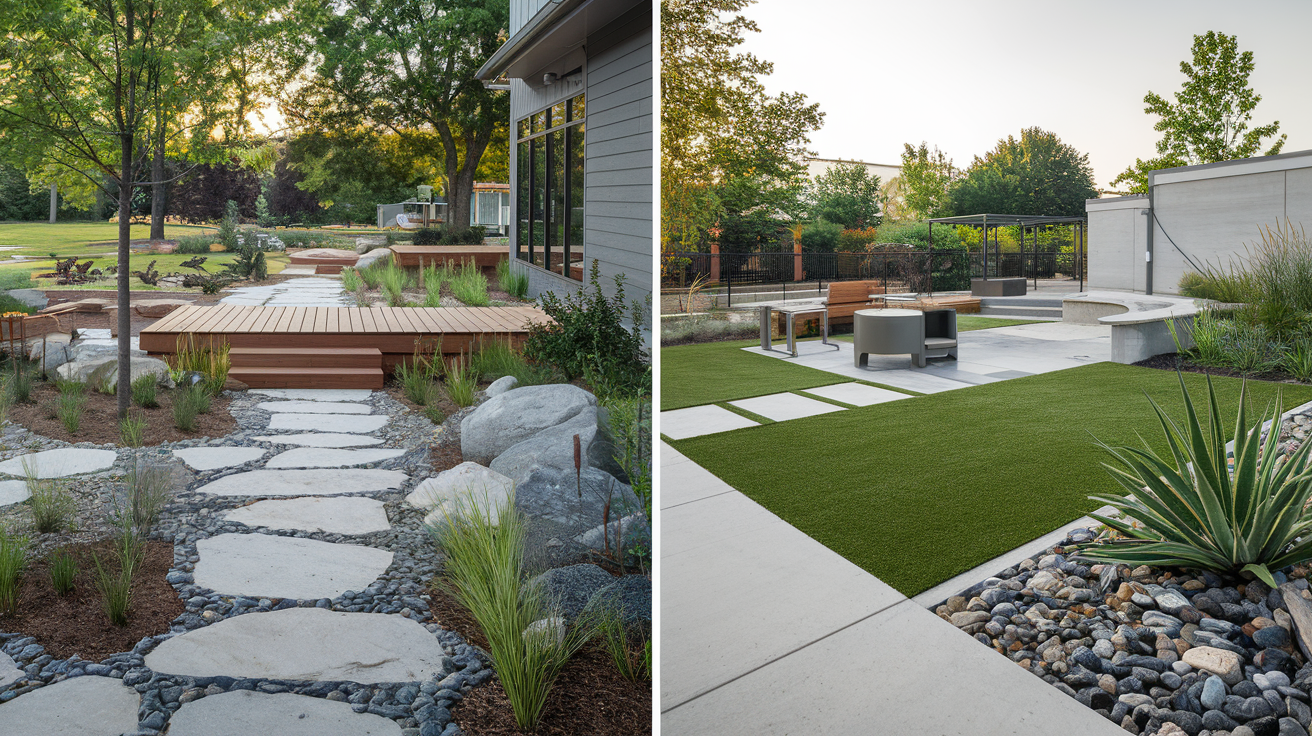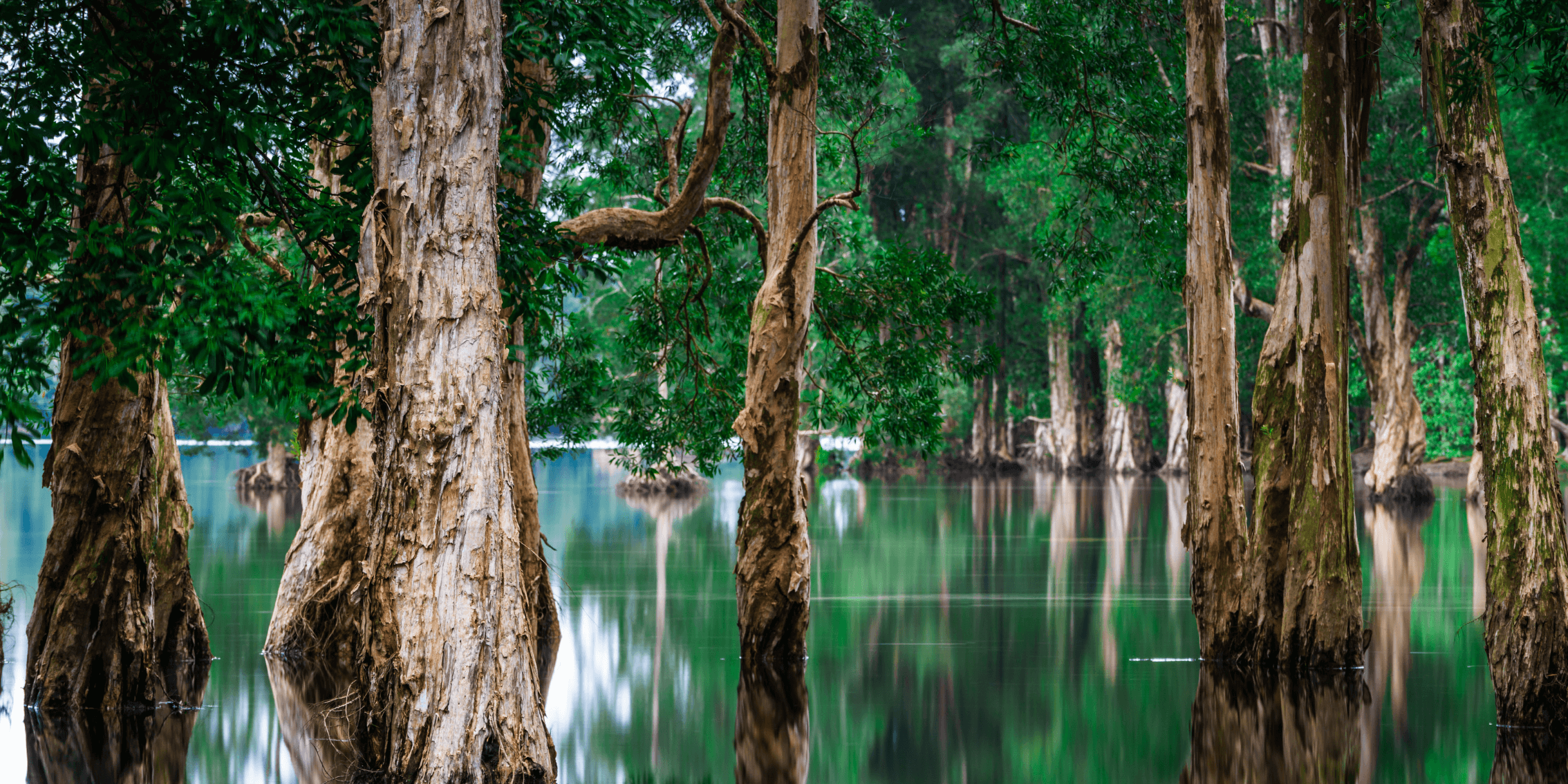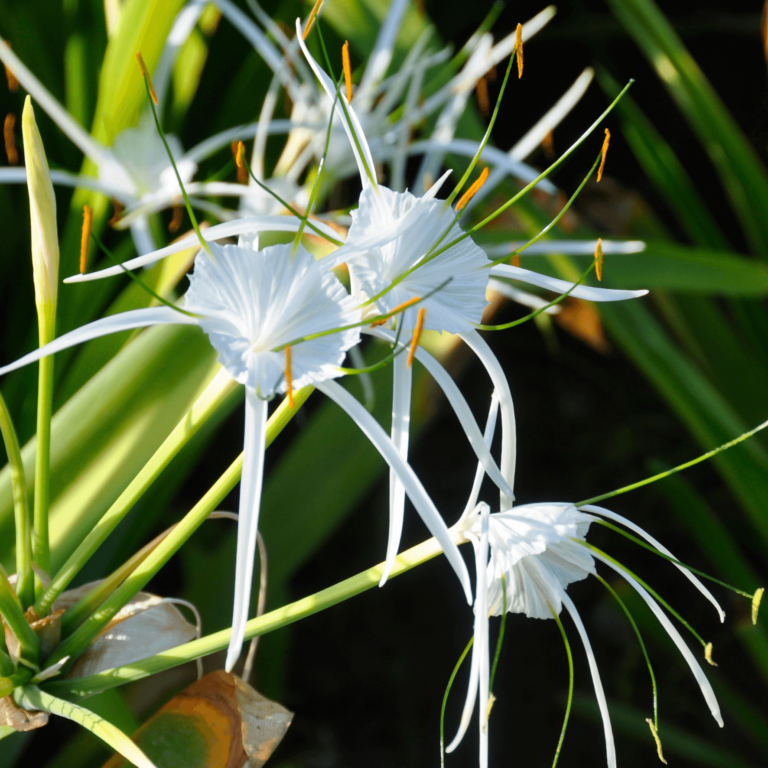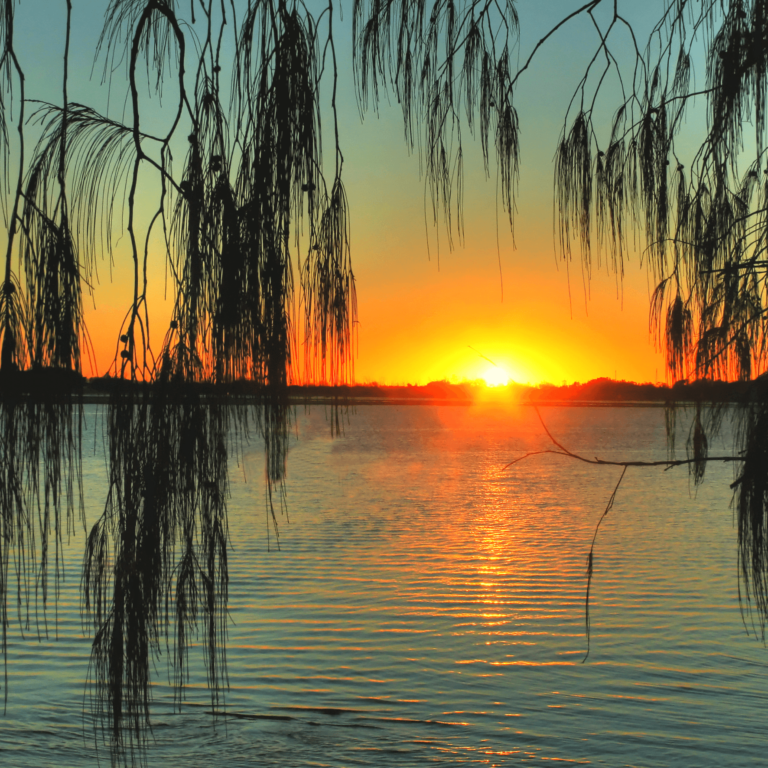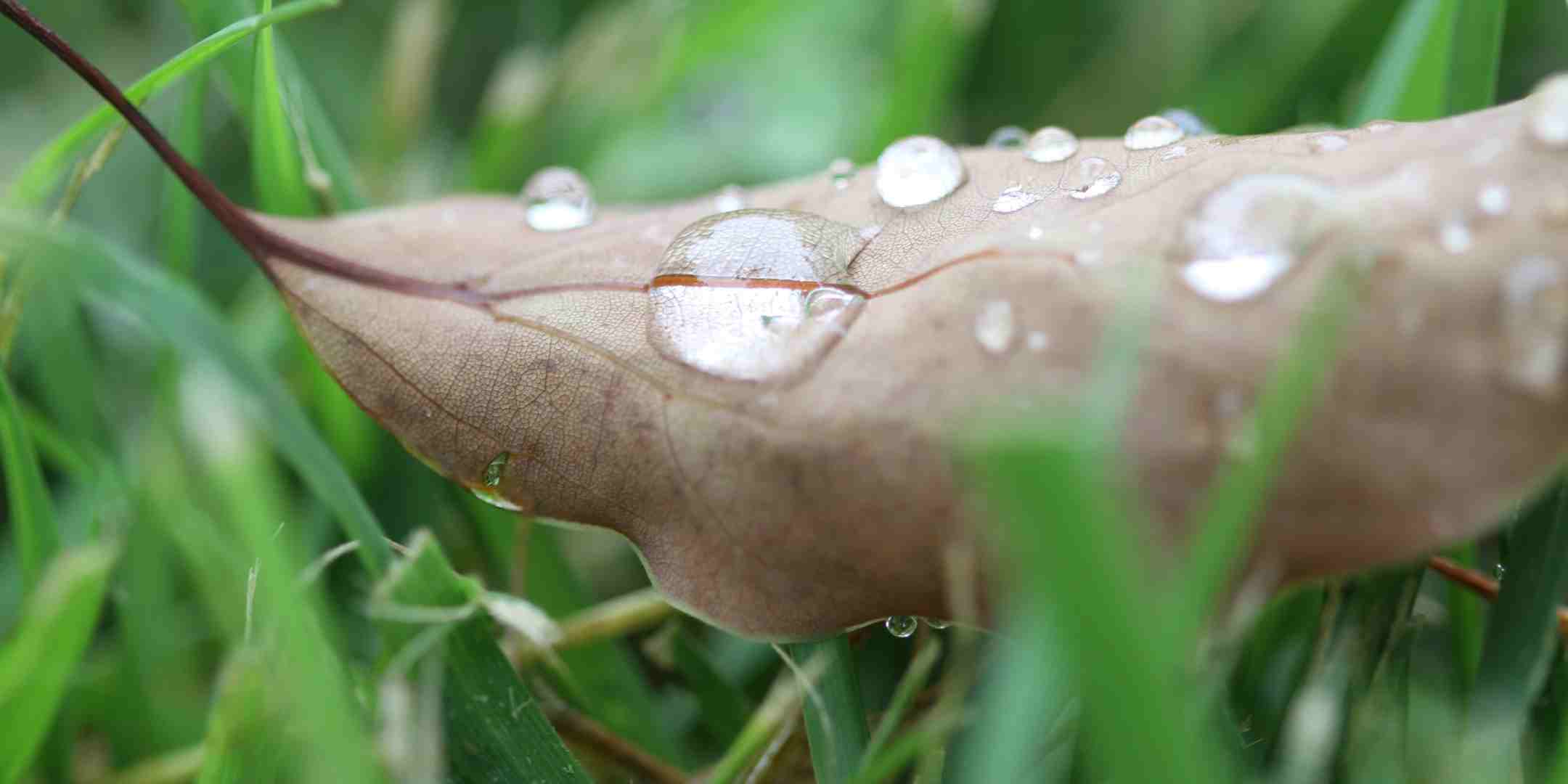MY Tips
Natural vs. Artificial Materials in Landscape Design: Which is Better for the Environment?
In the world of landscape design, the debate between natural and artificial materials is central to sustainability and environmental impact. The choice you make can significantly affect not only the aesthetics and functionality of your space but also the ecological footprint of your project. In this blog, we’ll explore the key differences between natural and artificial materials, provide examples of each, and evaluate which option is better for the environment.
1. Understanding Natural Materials in Landscape Design
Natural materials are those derived directly from the earth without significant processing. They include stone, wood, soil, plants, and water. These materials are often prized for their aesthetic qualities, durability, and their ability to blend seamlessly into the natural environment.
Examples of Natural Materials:
Stone (Limestone, Granite, Sandstone):
Stone is a timeless choice for pathways, walls, and decorative features. It requires minimal processing, and when locally sourced, it has a low carbon footprint. Stone is also long-lasting and recyclable.Wood (Hardwood, Bamboo):
Wood is commonly used in decking, fencing, and garden furniture. Responsibly sourced timber can be a sustainable choice, particularly if it comes from certified forests. Bamboo, in particular, is highly renewable, growing quickly and regenerating without the need for replanting.Plants (Native Species):
Using native plants in landscaping is an excellent way to support local biodiversity, reduce the need for watering, and minimise the use of chemical fertilisers and pesticides.Soil and Mulch:
Natural soil and organic mulch enhance soil health and contribute to plant growth. They help retain moisture, suppress weeds, and improve the structure of the soil over time.
Benefits of Natural Materials:
Low Environmental Impact:
Natural materials often have a smaller ecological footprint because they require less energy-intensive processing.Recyclability and Biodegradability:
Many natural materials can be reused, repurposed, or left to biodegrade without harming the environment.Supporting Biodiversity:
By using natural elements like native plants, you contribute to local ecosystems and provide habitats for wildlife.Aesthetic Harmony:
Natural materials tend to blend well with the surrounding environment, creating a sense of continuity with nature.
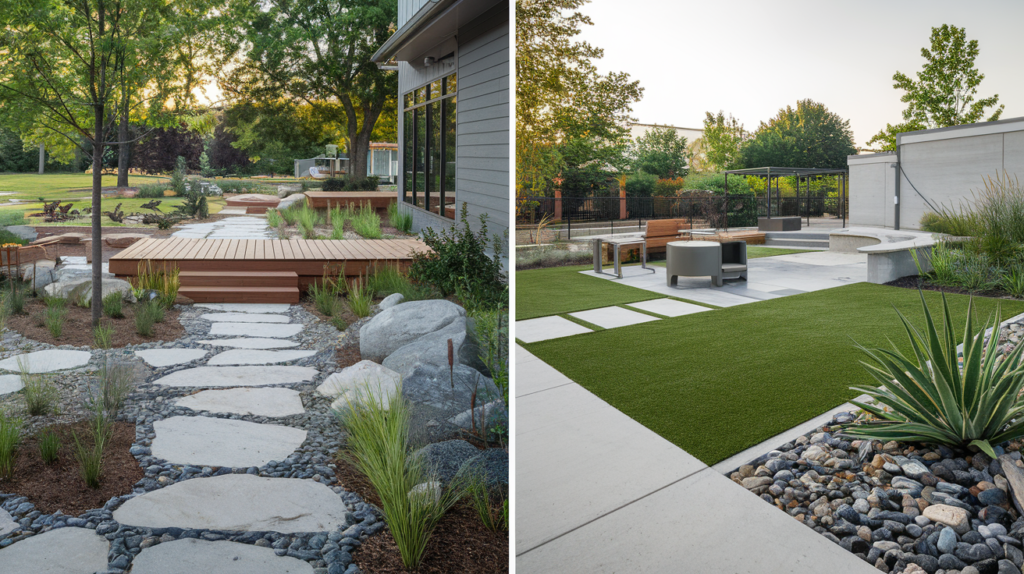
2. Exploring Artificial Materials for Landscape Design
Artificial materials are human-made and often involve significant processing or chemical treatments. While they can be practical and cost-effective, their environmental impact is often higher due to the resources required for manufacturing, transportation, and disposal.
Examples of Artificial Materials:
Concrete and Asphalt:
These materials are widely used for hardscaping, such as driveways and patios. While durable and cost-effective, they are energy-intensive to produce and contribute to heat island effects in urban environments.Plastic (Artificial Turf, PVC Decking):
Plastic-based materials are commonly used in landscaping for synthetic turf, decking, and garden furniture. While these materials can be durable and low-maintenance, they are derived from petroleum, a non-renewable resource, and can take hundreds of years to degrade in landfills.Composite Wood:
Often made from a combination of wood fibres and plastic, composite wood products are used as a substitute for natural wood in decking and fencing. While they offer low maintenance and resistance to rot, they are not biodegradable and can release harmful chemicals during manufacturing.Rubber Mulch:
Derived from recycled tyres, rubber mulch is often marketed as an eco-friendly alternative to organic mulch. However, it can leach harmful chemicals into the soil and has a significantly higher environmental impact than natural mulch.
Benefits of Artificial Materials:
Durability and Low Maintenance:
Artificial materials are often chosen for their long-lasting properties and reduced need for upkeep. For instance, artificial turf requires no mowing or watering.Cost-Effective:
In some cases, artificial materials can be less expensive upfront than their natural counterparts, making them attractive to budget-conscious projects.Versatility:
Human-made materials can be designed in a variety of styles, colours, and textures that are difficult to achieve with natural materials.
3. The Environmental Impact: Which is Better?
Consider the environmental impact, you find natural materials generally come out on top for several key reasons:
Energy Consumption and Carbon Footprint:
Natural materials like stone, wood, and soil require significantly less energy to produce and transport than artificial alternatives like concrete and plastic. For instance, the production of concrete generates a substantial amount of CO2, while natural stone can often be sourced locally, reducing transportation emissions. According to the International Energy Agency, cement production alone is responsible for approximately 7% of global carbon dioxide emissions.
Lifespan and Recyclability:
While some artificial materials are long-lasting, their end-of-life disposal poses environmental challenges. Natural materials, on the other hand, can often be recycled, reused, or biodegraded. For example, stone can be repurposed, and wood can be composted or turned into mulch. Even when wood deteriorates, it enriches the soil, while plastic or rubber products can persist in the environment for centuries.
Biodiversity and Ecosystem Support:
Using natural materials promotes biodiversity and supports local ecosystems. Native plants, for example, attract pollinators and create habitats for wildlife. Artificial materials, particularly synthetic turf, disrupt natural soil ecosystems and do not provide the same benefits for local flora and fauna.
Water and Heat Management:
Natural materials like organic mulch and permeable stone allow for better water infiltration, helping to manage stormwater and reduce runoff. In contrast, materials like concrete and asphalt contribute to the “urban heat island” effect, where surfaces absorb and retain heat, raising temperatures in urban areas. Additionally, artificial turf can exacerbate heat buildup, creating an uncomfortable environment during hot weather.
Balancing Natural and Artificial Materials:
While natural materials are generally better for the environment, there are scenarios where a blend of natural and artificial materials may be the most practical solution. For example, in high-traffic areas, using a combination of natural stone pathways with eco-friendly composite decking may provide durability without sacrificing sustainability. Additionally, recycled or sustainably sourced artificial materials, such as recycled plastic or composite wood, can offer a compromise between longevity and environmental impact.
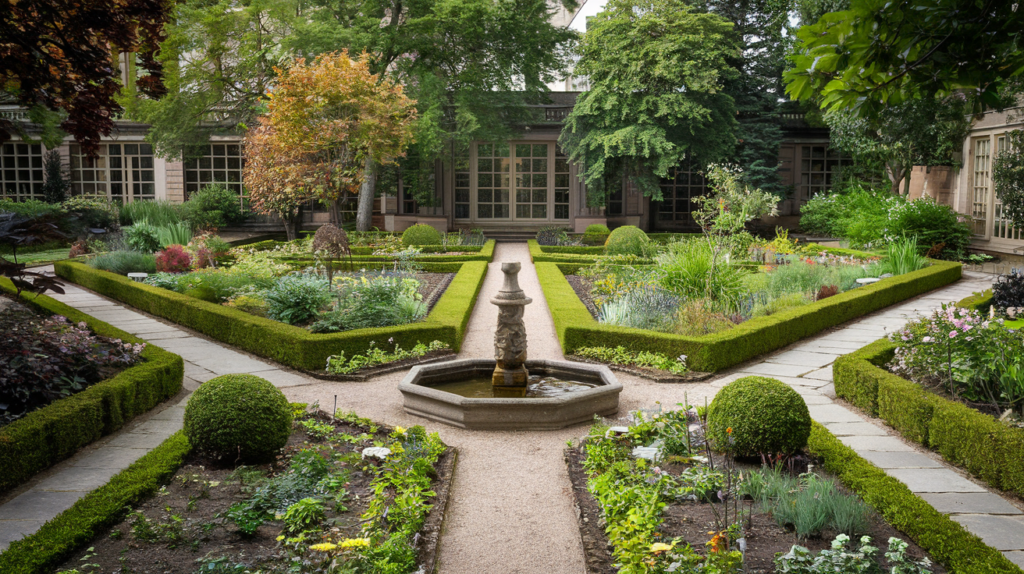
Conclusion: Choose Wisely
In the battle between natural and artificial materials, the environment often benefits from the use of natural options. However, the best approach depends on the specific requirements of your landscape design project. For those committed to sustainability, prioritising locally sourced, renewable, and recyclable materials is a step in the right direction. At the same time, some artificial materials, when used thoughtfully, can extend the lifespan and functionality of a design. As landscape designers and homeowners, the key is to strike a balance that serves both the environment and the long-term needs of the space.
Resources:
For further reading, explore these resources:
- International Energy Agency: Cement Production and CO2 Emissions
- World Wildlife Fund: Sustainable Timber and Forest Certification
- Green Building Council: The Environmental Impact of Building Materials
Additional Resources:
Here are additional Australian resources for further reading:
- Australian Government – Sustainable Gardening Guidelines: Offers advice on creating environmentally friendly gardens, including the use of natural materials and native plants.
- YourHome.gov.au – Materials: Embodied Energy: Discusses the environmental impact of building materials in Australia, focusing on energy consumption and sustainability.
- Australian Institute of Landscape Architects (AILA) – Sustainability in Landscape Design: Covers sustainable practices, including material choices and biodiversity in landscape architecture.
Our recommendations and information provided in our articles, blog and on this website is intended to be educational and informative only. It is at no time to be relied upon as personal advice for your own situation. While we try our best to ensure that the information is accurate, sometimes it may not be suitable or correct for your particular circumstances or the products or services you may choose to purchase.
Any comments, guidance, or information on this website is our own view and based on our experience and we do not provide any guarantees, warranties relating to any aspect of the information, including but not limited to any reliance on the safety or security of any landscape recommendations, renovations, designs, plant use or any particular installations. We hope you find it helpful but please be aware that it may not be suitable for your situation, location, surroundings or other specific needs. This information is offered in good faith and it is not specific to any one person or any personal circumstance. You should contact us directly so we may review and assess your own situation to be able to provide recommendations specific to your own requirements, particularly if you are in a fire, drought or other sensitive area.
We hope you understand that for this reason, we are not to be held liable for any decisions you make based on any of the information, views, or recommendations on our website and in our blog articles and any consequences, as a result, are your own.
The information shown and posted on this website or expressed by either the moderator is the view of the person(s) posting only and is intended to be examples only and not advice for you personally.
Any decisions or information on this website you decide to use, read or act upon is done at your own risk and you shall indemnify yourlandscapejourney.com, its directors and employees for any and all claims whether resulting directly or indirectly from your actions.

